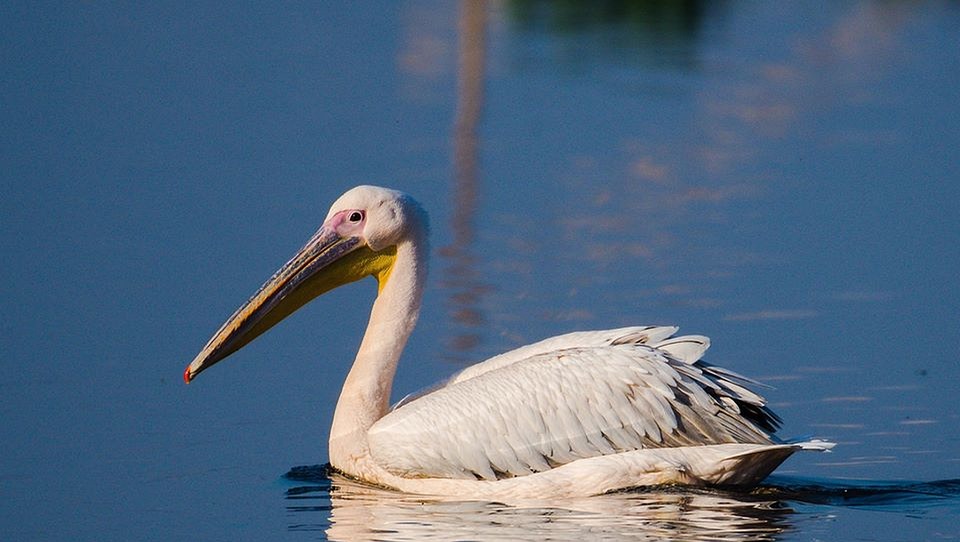Swim bladder issues can be a common problem among aquarium fish, causing buoyancy problems and affecting their overall health. In this article, we will delve into the causes, symptoms, and effective solutions to address swim bladder issues in fish. Additionally, we have compiled a list of frequently asked questions (FAQs) to provide you with comprehensive knowledge on this topic.
**I. Understanding Swim Bladder Issues**
1.1 What is the swim bladder?
The swim bladder is an internal gas-filled organ that helps fish control their buoyancy and maintain their position in the water column. It acts as a floatation device, allowing fish to stay at a desired depth without expending much energy.
1.2 What causes swim bladder issues?
Swim bladder issues can be caused by various factors, including genetics, poor water quality, overfeeding, constipation, bacterial or parasitic infections, physical injuries, and even stress.
1.3 Which fish species are more prone to swim bladder problems?
Certain fish species are more susceptible to swim bladder issues due to their specific anatomy or genetic predisposition. Some examples include fancy goldfish, bettas, guppies, and angelfish.
1.4 How can I identify swim bladder issues in my fish?
Common signs of swim bladder issues include difficulty swimming or maintaining balance, buoyancy problems (sinking or floating excessively), loss of appetite and reduced activity, distended or bloated abdomen, and erratic swimming patterns.
**II. Common Symptoms of Swim Bladder Issues**
2.1 Buoyancy problems: Sinking or floating excessively
Fish with swim bladder issues may struggle to maintain a neutral buoyancy, leading to either sinking to the bottom or floating at the water’s surface.
2.2 Difficulty swimming or maintaining balance
Fish with swim bladder problems may have trouble swimming properly, exhibit a lack of coordination, or struggle to maintain their balance.
2.3 Loss of appetite and reduced activity
Swim bladder issues can cause fish to lose their appetite and become less active than usual.
2.4 Distended or bloated abdomen
An enlarged or bloated abdomen is a common symptom of swim bladder issues, often due to constipation or internal infections.
2.5 Erratic swimming patterns
Fish with swim bladder problems may exhibit erratic swimming patterns, such as swimming upside down, spiraling, or tilting to one side.
**III. Addressing Swim Bladder Issues: Prevention and Treatment**
3.1 Maintaining water quality
Keeping the aquarium water clean and properly filtered is essential in preventing swim bladder issues. Regular water changes, monitoring ammonia and nitrite levels, and maintaining suitable pH and temperature are crucial.
3.2 Ensuring proper diet and feeding practices
Feeding a balanced diet and avoiding overfeeding are vital in preventing swim bladder problems. Provide a variety of high-quality foods and feed in appropriate portions to avoid constipation.
3.3 Providing appropriate tank conditions
Ensure that the tank size, decorations, and plants are suitable for the fish species. Provide hiding spots and adequate swimming space to reduce stress and potential injuries.
3.4 Adjusting water temperature and oxygen levels
Maintaining optimal water temperature and oxygen levels can help alleviate swim bladder issues. Some fish may benefit from slightly warmer water, while others may require increased oxygenation.
3.5 Using medications and treatments
In severe cases, medications or treatments prescribed by a veterinarian may be necessary. These can include antibiotics for infections or specialized treatments to address parasites or constipation.
**IV. FAQs: Swim Bladder Issues in Fish**
4.1 Can swim bladder issues be cured?
Swim bladder issues can sometimes be cured, especially if they are caused by temporary factors such as constipation or stress. However, some fish may have chronic swim bladder problems that cannot be fully resolved.
4.2 How long does it take for a fish’s swim bladder to heal?
The healing time for a fish’s swim bladder can vary depending on the underlying cause and the fish’s overall health. In some cases, it may take a few days to a couple of weeks for the swim bladder to heal.
4.3 Should I isolate a fish with swim bladder issues from other tankmates?
It may be necessary to isolate a fish with swim bladder issues if it is being bullied or if its condition is contagious. However, isolation should be a last resort, as it can cause additional stress to the fish.
4.4 Can swim bladder problems be prevented?
Swim bladder problems can be prevented to some extent by maintaining proper water conditions, providing a balanced diet, and avoiding overfeeding. However, some fish species may be more prone to swim bladder issues due to their anatomy or genetics.
4.5 Is swim bladder disease contagious among fish?
Swim bladder disease itself is not contagious, but the underlying causes, such as bacterial or parasitic infections, can be contagious. It is important to quarantine and treat infected fish to prevent the spread of diseases.
4.6 Can swim bladder issues be caused by stress?
Yes, stress can contribute to swim bladder issues in fish. Environmental stressors, such as poor water quality, overcrowding, or aggressive tankmates, can affect fish health and potentially lead to swim bladder problems.
**Conclusion**
By understanding the causes, recognizing the symptoms, and applying appropriate preventative measures and treatments, you can effectively address swim bladder issues in your fish. Maintaining a healthy swim bladder is crucial for the overall well-being and longevity of your beloved aquatic pets. Remember to consult a veterinarian or an experienced fish keeper if you require further assistance in dealing with swim bladder problems.
We hope this comprehensive guide has provided you with valuable insights into fish health and swim bladder issues. Remember, a healthy fish is a happy fish!
*Disclaimer: The information provided in this article is for educational purposes only and does not replace professional advice. Always consult with a veterinarian or an experienced fish keeper for specific recommendations for your fish’s health concerns.*









